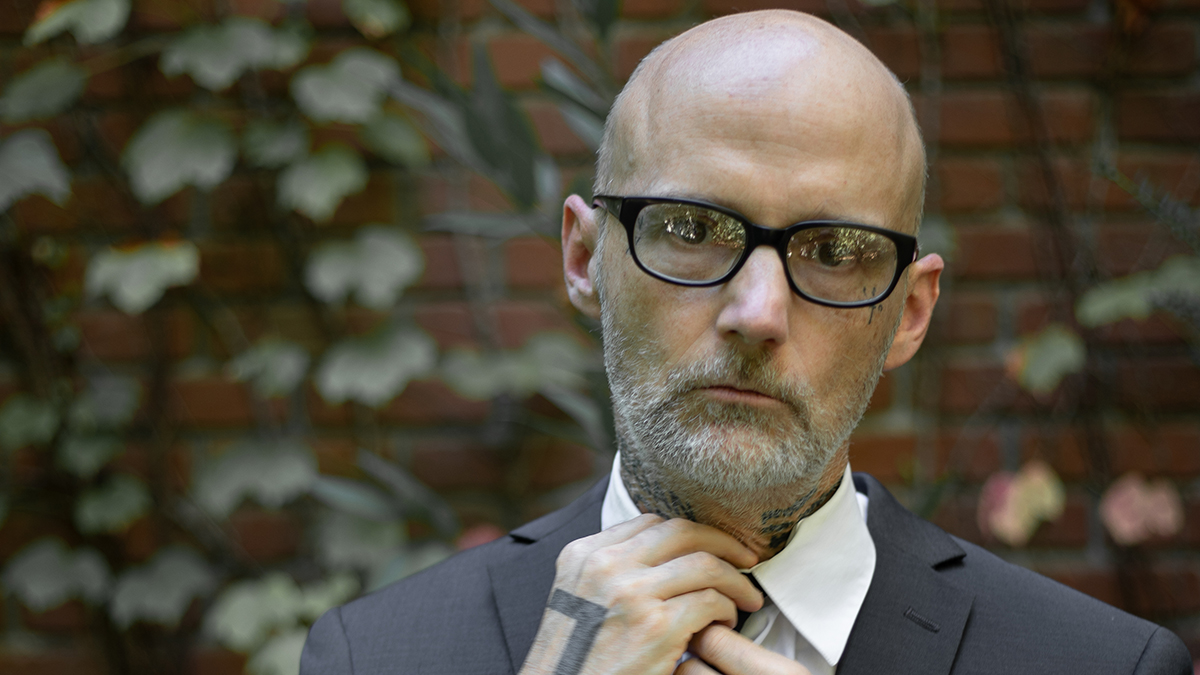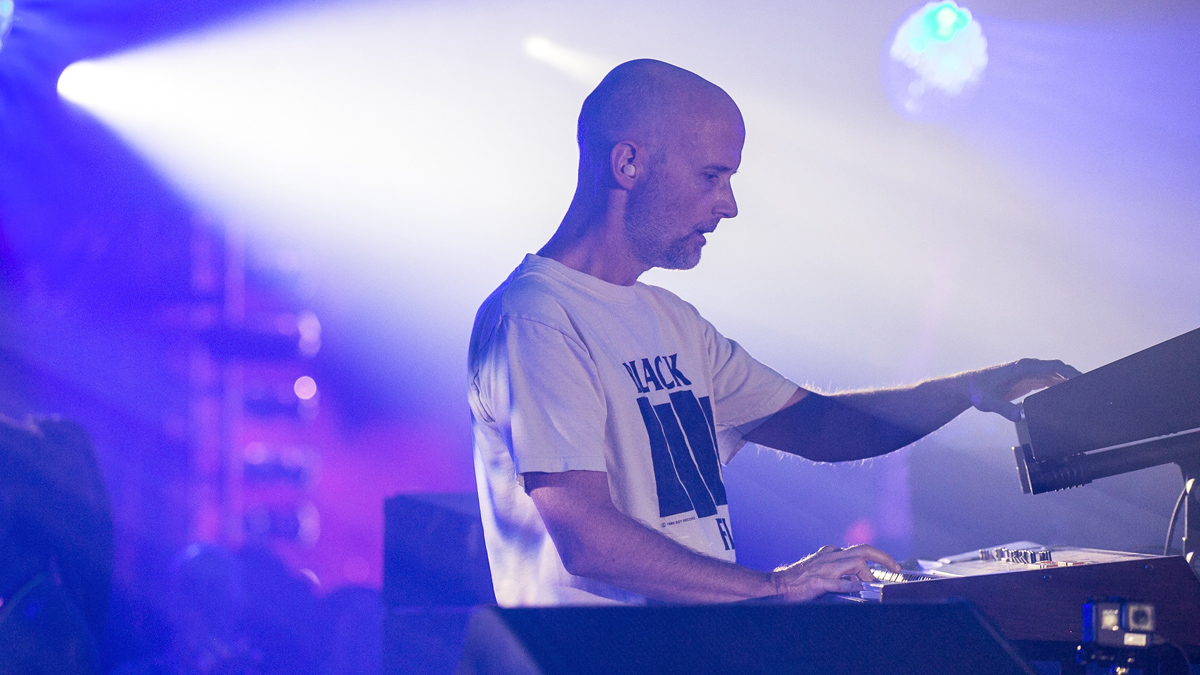
You shouldn't be surprised that Moby's new album is a classical recreation of his early recordings. Not only is it his second such dalliance, but this is also a producer who has dabbled in just about every genre, so why not classical?
There were the breakout techno and ambient tracks in the early '90s, through punk and film scores, to his trademark, often gospel-laden electronica from the huge album Play onwards. Moby, then, is quite clearly happy just making music of any kind.
“And if someone does listen to it,” he laughs, “then how lucky I am!”

New album Resound NYC is a follow up to Reprise, the 2021 record that gave us classical Moby tracks like We Are All Made of Stars, Porcelain and Natural Blues, played by the LA Philharmonic with guest vocalists including Gregory Porter and Kris Kristofferson.
Resound NYC takes more of Moby's best - and indeed least - known tracks, but this time from a specific period of 1994 to 2010, while he was living in New York. But it isn't really Reprise Mk 2. There are strains of big band, ‘70s funk and soul, plus hints of the times when bands like The Rolling Stones and Led Zeppelin had way too much time and cash on their hands so drafted in orchestras to create classical rock albums.
Yet Resound NYC is not really even that. Moby has managed to make it Moby, make it sound like a band, make it classical, make it funk, make it hard and make it atmospheric - pretty much like he's thrown all three plus decades of those different genres at some kind of space orchestra, asked them to play it and pressed record.
We caught up with the music maestro - and in this case we can truly call him that - to talk about what could well be the dance/ambient/classical/techno/jazz/punk composer's most joyous work.
It must be pretty intimidating working with a full orchestra…
“Well, this was my second orchestral album, and the first, Reprise, was the one where it was like 'oh my god I'm working with the LA Philharmonic orchestra!' That was intimidating, but my A&R person at Deutsche Grammophon encouraged me to have a broader approach: an orchestra can be anything, and should serve the music rather than the music serving the orchestra, so making this record was a lot less intimidating.”
Why did you decide to do another orchestra-based project after Rewind?
“I'd like to have a really clever answer about nostalgia and revisiting the past to gain perspective on the present, but if I'm being honest it's just fun! I know that's selfish, especially at a time when the world is collapsing, and 'fun' might not be the most reputable criteria to apply to things. But revisiting songs, finding singers, writing arrangements and recording orchestras is - and I say this with some guilt - just a really fun way to approach making music. I should probably work on a deeper answer to that question.”
How did you choose the tracks?
“If I go to see Echo & the Bunnymen I kind of want to hear them play Do It Clean, The Killing Moon and Never Stop. I want to hear the hits, so half of the record is that. But the other half is songs people might not have heard that I wanted to revisit because I loved them or there was some unrealised potential. Or I was revisiting a song specifically for a vocalist, like Walk With Me; the only reason I did that was because Lady Blackbird agreed to do it. There isn't anyone who has that vocal control, vulnerability and power.”
Was the orchestration of the original tracks difficult?
“It's not as simple as, 'let's take the MIDI parts from 1999 and have an orchestra play them'. You have to rewrite everything, but that's what makes it fun. With Reprise I did rudimentary arrangements but gave them to an orchestrator/conductor. He fine-tuned what I'd done. In this case I kind of did everything. But before we started recording, I ran everything through my friend Jonathan who understands orchestration and he gave it the 'last look'. He identified where I might be asking an instrument to do what it can't do.”
Some of the brass sections are particularly powerful - how did those come together?
“I'd never worked with a brass section. I wrote the parts and then the horn players came in, and I learned that recording horn players was the easiest thing because they are so loud and so directional. You throw a microphone in front of it and, lo and behold, it sounds great!”
So was the overall recording experience easier than you thought?
“In some instances, like recording an orchestra when you have 120 people in a room, that's when the professionals step in. They understand who is being close mic'd, the ambient mics, which mics to use - AKGs, Neumanns or Telefunkens. That's when I just sit back and listen. But with certain instruments, like the horn players, it's a breeze: throw a mic up and put a pad on because the horns are so loud, and you have a great sound.”
There's a '60s funk vibe going on with some tracks that we didn't expect…
“Oh yes, the inspiration was 'orchestral rock'. And I'm even including Exile on Main St and Physical Graffiti - when rock bands worked with non rock instruments. Even listening to early Yes tracks, the way they combined traditional with non traditional, I found inspiring. I also learned that some of my favourite classic string parts were actually Mellotrons. I hired one and suddenly I was like 'oh, this is a Simon & Garfunkel song, this is Stairway To Heaven, this is Their Satanic Majesties Request.’”
Was there any point where you were tempted to put a sound in from an orchestra library thinking 'well no-one will notice'?
“Actually I found that augmenting real strings with these libraries can be wonderful. You have the 80:20 rule, with 80% live strings and 20% augmenting, maybe with an old Moog or Mellotron. Usually if you have a clean orchestral sound, you might want to give it some grit; that's when you add the Mellotron. A lot of early glam records were very saxophone driven, and they would often have the sax, guitar and sometimes a Moog doing the same parts. It would give a power that you can't get with one instrument.”
You've got some major vocalists involved – was it easy to sign them up?
“Sometimes it's the easiest thing. One of my favourite songs on Reprise was The Lonely Night with Mark Lanegan and Kris Kristofferson. Mark was a dear friend of mine and all I did was email him. And with Kris Kristofferson, obviously the most legendary person on the record, it was the same. I'd met him and got his email address, so said 'I don't know if you remember, we met years ago, but I've done this song, would you like to sing on it?'. And he said 'yes'!”
Which reworkings are you most pleased with?
“Danielle Ponder has a voice I love, so I recorded an arrangement for her for Run On [from Play that uses samples from the 1949 song, Run On for a Long Time]. Her father is very ill and very old, and she was visiting him in hospital, and when she told him she was going to sing it, he lit up and started singing it, as he grew up singing the original. She recorded him on her phone - an a cappella version of him singing Run On in his hospital bed - and sent it to me, and I thought it was so special, but it didn't work with the recording I had. So I rewrote the song around the vocal, and then Danielle came in and basically did this duet with her father. The precious quality of his voice was such a unique, remarkable moment: a man in his ‘90s remembering being seven years old in church singing this song.”
I love making music however, whenever, wherever.
Has the whole process made you rethink how you produce further Moby albums?
“I love making music however, whenever, wherever. I loved this process of working with an orchestra, but I also love sitting down in my backyard with friends playing Neil Young songs on an acoustic guitar. Sometimes it's nice to be making music simply for the pure satisfaction and joy of making music.”
What are your fondest memories of recording in New York during the time that this album celebrates?
“It was a fascinating place; dark and dangerous but filled with naïve optimism. And because it was so cheap to live, there was no pressure. I was living in an abandoned factory paying $50 'squatter's rent' a month. As a result, everyone was poor, everyone was struggling, but everyone was happy making music and art, and I miss that cloistered optimism and innocence.”
And your fondest memories over your career?
“I grew up playing music that no-one listened to in bands who played to audiences of five people, so assumed that's what I'd spend my life doing. So I'm still amazed that I get to work on music and occasionally someone is willing to listen to it. I hope that doesn't sound disingenuous but whenever I release music, I think no-one is going to listen, and that's fine. And if someone does listen to it, then how lucky I am.”
Moby’s new album, Resound NYC, is out now on Deutsche Grammophon.







